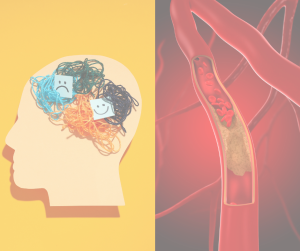- Open:Weekdays: 8:30 am – 5:30 pm, Saturdays: 9:00 am-2:00 pm
- Email: info@youdrugmart.com
Understanding the difference between disease and disorder helps patients, caregivers, and professionals communicate more clearly. These terms often appear interchangeable, but they describe different health conditions. While both affect the body or mind, they differ in cause, diagnosis, and treatment.
Let’s look at numbers. According to the World Health Organization, chronic diseases cause 74% of global deaths annually. These include heart disease, cancer, and diabetes. Meanwhile, the National Institute of Mental Health reports that 1 in 5 adults in the U.S. lives with a mental disorder.
These figures show the difference between disease and disorder in prevalence and impact. Diseases often lead to physical decline. Disorders affect mental and emotional well-being. Both deserve attention and resources.
Knowing the difference between disease and disorder can improve how we approach care and prevention.
To begin, let’s define the difference between disease and disorder. A disease refers to a condition with a known cause and identifiable symptoms. For example, tuberculosis results from a bacterial infection and shows clear signs like coughing and fever. In contrast, a disorder describes a disruption in normal function. It may not have a single cause. ADHD, for instance, affects attention and behavior but lacks a specific biological marker.
According to Dr. Vandana Rai, “Diseases often have measurable signs, while disorders rely more on observed symptoms and functional impact”. This quote highlights the difference between disease and disorder in clinical diagnosis.

Next, we explore causes to understand the difference between disease and disorder. Diseases usually stem from infections, genetics, or environmental toxins. For example, diabetes results from insulin dysfunction, often linked to genetics or lifestyle. Disorders, however, may arise from complex interactions. Anxiety disorder can involve genetics, trauma, and brain chemistry.
Moreover, diseases often follow a predictable path. Disorders may vary widely between individuals. This variability emphasizes the difference between disease and disorder in how doctors assess and treat patients.
Now let’s examine diagnosis. The difference between disease and disorder becomes clear in medical testing. Doctors diagnose diseases using lab tests, imaging, or biopsies. For instance, cancer shows up in scans and tissue samples. Disorders, however, rely on behavioral assessments or symptom checklists. Autism spectrum disorder is diagnosed through observation and developmental history.
In fact, a 2023 study from Verywell Health noted, “Disorders often lack a single diagnostic test, making diagnosis more subjective”.
Symptoms are different in disease and disorder. Diseases present with consistent signs. Fever, rash, or swelling often point to a specific illness. Disorders show broader symptoms. Depression, for example, affects mood, sleep, and energy in different ways.
Furthermore, disorders may fluctuate over time. Diseases tend to follow a more stable course. This difference impacts treatment plans and patient expectations. Identifying if a condition is a disease or a disorder, helps tailor treatment plan to individual needs.
Treatment approaches highlight the difference between disease and disorder. Doctors treat diseases with medication, surgery, or targeted therapies. For example, antibiotics cure bacterial infections. Disorders often require long-term management. Therapy, lifestyle changes, and support systems play key roles.
Additionally, disorders may not respond to medication alone. Mental health disorders often need counseling and social support.
Prognosis varies, showing another difference between disease and disorder. Diseases may resolve with treatment. For instance, pneumonia clears with antibiotics. Disorders often persist. Conditions like bipolar disorder require lifelong management.
Even so, both diseases and disorders can improve with care. Early intervention makes a difference and sets realistic goals and expectations.
Experts continue to clarify the difference between disease and disorder. Dr. Arpit Varshney explains, “Diseases have biological markers. Disorders reflect functional impairment without a clear cause”. This distinction guides research and treatment.
Moreover, medical journals emphasize the need for accurate terminology. Mislabeling a disorder as a disease can lead to inappropriate treatment. Understanding their difference improves patient outcomes.
Finally, let’s discuss why the difference between disease and disorder matters. Patients deserve accurate diagnoses. Misunderstanding these terms can delay treatment. For example, calling depression a disease may overlook its psychological roots.
In addition, insurance coverage and medical coding depend on correct classification. They also affect access to care and support. Clear communication benefits everyone—from doctors to families.
In conclusion, the difference between the two terms lies in cause, diagnosis, symptoms, and treatment. Diseases have clear origins and measurable signs. Disorders involve functional disruptions and complex factors. Both impact health, but they require different approaches.
Just like the diff between disease and disorder, there are key differences between a disease and a syndrome. Explore this topic to learn more.
